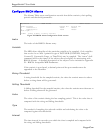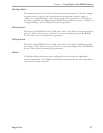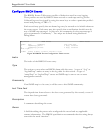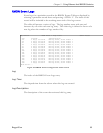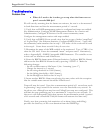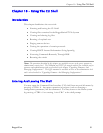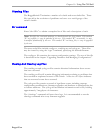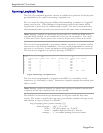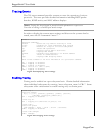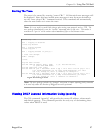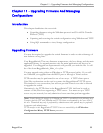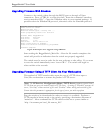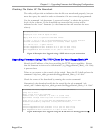
RuggedSwitch™ User Guide
Running Loopback Tests
The CLI loop command provides a means to validate the operation of the physical
port hardware of the switch by running a loopback test.
The test works by taking the port offline and transmitting a number of “loopback”
frames out the port. If the hardware is functioning correctly the frames will be
looped back to receiver to be validated and counted. The test is successful when
all transmitted frames are received correctly and in the same order as transmitted.
Note:
Running a loopback test will disrupt the ports under test. RSTP and IGMP will be
suspended during loopback but will automatically restart after the test completes. Care should
be taken not to start a loop test from a telnet session on the port used to connect to the switch.
The test can be programmed to stop after a number of passes, to continue until an
error occurs or to continue indefinitely. The test can be programmed to occur on
one port or on all ports. Status information will be displayed as the test proceeds.
The test can be stopped at any time by pressing <CTRL-C>.
Figure 62: Running a Loopback Test
The test can be programmed to loopback at the PHY (i.e. internally), at the
transceiver (i.e. externally) or both. Transceiver loopback requires an external stub
cable to work.
Note:
Running a transceiver loopback test without first replacing the network connection with
a loopback stub will inject loopback frames into your network.
The default is to run both loops alternatively on all ports until the first error
occurs. The syntax to specify the loop type, port number, number of loops to run
and whether to stop on errors is as follows:
Loop 11
Port ---------------PHY--------------- ---------------TR---------------
Frames sent Frames Lost %Error Frames sent Frames Lost %Error
1 880 0 0 880
2 880 0 0 880 3 <1%
3 880 0 0 880
4 880 0 0 880
5 880 0 0 880
6 880 0 0 880
7 880 0 0 880
8 880 0 0 880 880 100%
l
loop [ looptype [ ports [ count [ nonstop ] ] ] ]
where looptype = “phy”, “tr” or “all”
ports = “all”|list of ports, e.g. “2,4-8,14”
count = number of passes to run (0 = forever)
nonstop = “y” to continue running if any error occurs
RuggedCom



